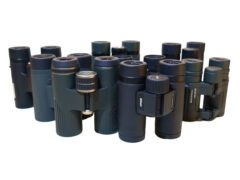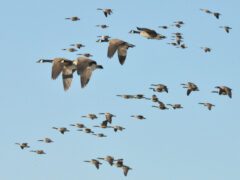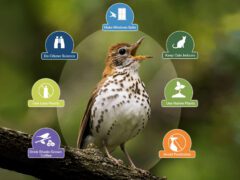The Four Keys to ID
- Size & Shape
A powerfully built flycatcher with a big head and a heavy, long bill. It has pointed but broad wings, and its medium-length tail shows a shallow notch in the center.
Relative Size
Larger than a Western Kingbird, smaller than a Green Jay.

 robin-sized
robin-sizedMeasurements
- Both Sexes
- Length: 7.1-9.1 in (18-23 cm)
- Weight: 1.1-1.5 oz (32-43 g)
© Chris Wood / Macaulay Library
- Color Pattern
- Behavior
- Habitat
Regional Differences
Ornithologists recognize three subspecies, which differ mostly in intensity of their plumage colors: satrapa from the United States south to Venezuela; despotes in eastern Brazil; and the larger melancholicus across the remainder of South America. Both despotes and melancholicus are more vividly yellow below than satrapa.








































